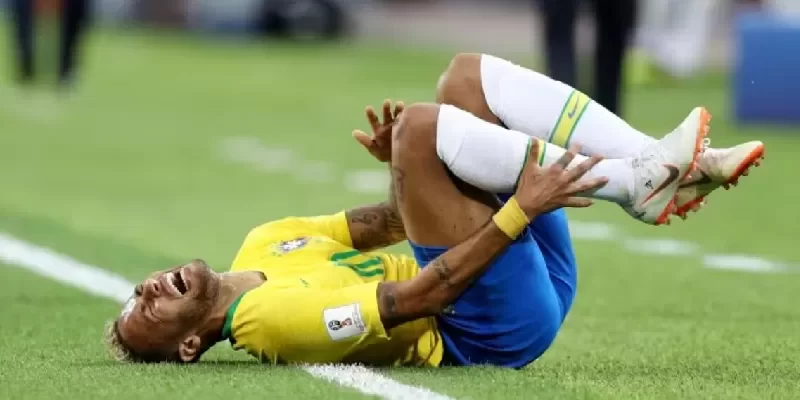
How to deal with the injuries of the player as a soccer referee?
In a soccer match, players are playing with intense emotion and physical contacts against the opponent team. Therefore, injuries are inevitable in the game.
As a soccer referee, dealing with player injuries is a crucial aspect of ensuring the safety and well-being of the participants. The outcome can affect the health and career future of the injured player in the sport if the referee can deal with it timely in the right way.
Here are some steps to deal with injuries on the field.
Step 1. Identify the genuine injuries.
Injuries are unpredictable. The referee needs to pay attention to the players on the field. Generally, most injuries happen when players collide, tackle and challenge, landing and fall, overexertion and muscle fatigue, headers and aerial duels. When players fall on the field, Referees need to find out whether he is diving or genuinely injured.
How to distinguish diving and genuine injuries?
Below is tips to help referees make more accurate assessments:
Observation and Positioning
Referees should maintain a good position on the field to have a clear view of incidents. Observation skills are crucial to detect genuine injuries or potential simulations.
Look for Immediate Reaction
A player genuinely injured may react with immediate pain, distress, or frustration. Observing the player’s initial response can provide clues to the authenticity of the injury.
Consistency of Reaction
Genuine injuries often result in consistent reactions. If a player’s behavior appears inconsistent with the nature and severity of the incident, it may raise suspicions of simulation.
Communication with Assistant Referees
Assistant referees can assist by providing input on incidents they have a clear view of. Effective communication among match officials is crucial in making accurate decisions.
Use of Video Assistance (VAR)
In competitions with Video Assistant Referee (VAR) technology, referees can review footage to make more informed decisions, especially in cases where the incident is unclear.
Player’s History
Referees who are familiar with players’ behavior or have knowledge of a player’s injury history may use this information to assess the likelihood of simulation.
Step 2. Stoppage of the game
If you notice a player on the field is injured, stop play immediately. This is especially important if the injury appears to be serious or if the player is in a vulnerable position. However, if the referee confirms the player is diving and it’s at the advantage of the offense side, the game should proceed. Therefore, it’s very important to identify the genuine injuries, it can influent the result of the match in some games.
Step 3. Assess the Situation
Quickly assess the severity of the injury from a safe distance. Approach the injured player cautiously, and be observant for any signs of distress.
Step 4. Signal for Medical Assistance
If the injury is severe, signal for medical assistance by waving both arms. This will alert medical personnel to come onto the field.
Step 5. Provide Initial Care
While waiting for medical help, provide basic first aid if you are trained to do so. This may include addressing bleeding, stabilizing fractures, or assisting with breathing difficulties.
Step 6. Communicate with Players and Coaches
Keep the players and coaching staff informed about the situation. Provide clear instructions on whether the game will resume or if there will be additional stoppage time.
Step 7. Manage Emotions
Injuries can be emotional for both players and spectators. Stay calm and composed, and manage the situation with authority to maintain control over the match.
Step 8. Restart the Game
Once the injured player is safely off the field and receiving appropriate care, restart the game with a drop ball or appropriate restart according to the Laws of the Game.
Step 9. Document the Incident
If the injury is significant, make a note of it in your match report. Include details such as the time of the injury, actions taken, and any relevant information.
